An adorable, original pencil case, ready to follow you absolutely everywhere! Practical and versatile, it’s a roll with a detachable and changeable part. But how does it work?
A (cute!) animal shaped roll, you can button a pouch in it.
By itself, you can wrap it around some notebooks to protect them.
Two models of interchangeable parts are currently available:
– a pouch to store pencils, markers, pens,
– a zipped pouch with a coated fabric inside to hide messy things (for example charcoals, pastels, soaps, toothbrushes…).
I’ve been developing this project for several months now, and it’s finally ready! I plan to release only one collection of interchangeable kits per year, because it’s a lot of work behind the scenes. Always with a different animal, and always with a part of the price donated to an association acting for its protection.
I will make another article later to reveal you the backstage, let’s start with the detailed presentation of this new collection!
Here is a little summary:
✨ The roll
🇲🇬 Lemur
✨ Interchangeable parts
🖌 Zipped part
✏️ Pencils part
🔎 The buttons
✂️ The iron-on
💚 The Impact Madagascar association
A cute animal to roll up to protect your stuff
The first model of mix & match pouches pays tribute to the lemur with the Maki Catta. Endemic to Madagascar, lemurs are threatened with extinction.
I composed with the characteristic features of the Maki Catta so that it remains recognizable to the maximum. Its tail makes it possible to close the roll, it is very practical!
The roll, even by itself, is far from being useless! It can protect a few notebooks for example, it can hold up to 2 large A5 size notebooks. The 4 buttonholes know how to be discreet and the grey fabric I chose is soft. 🙂
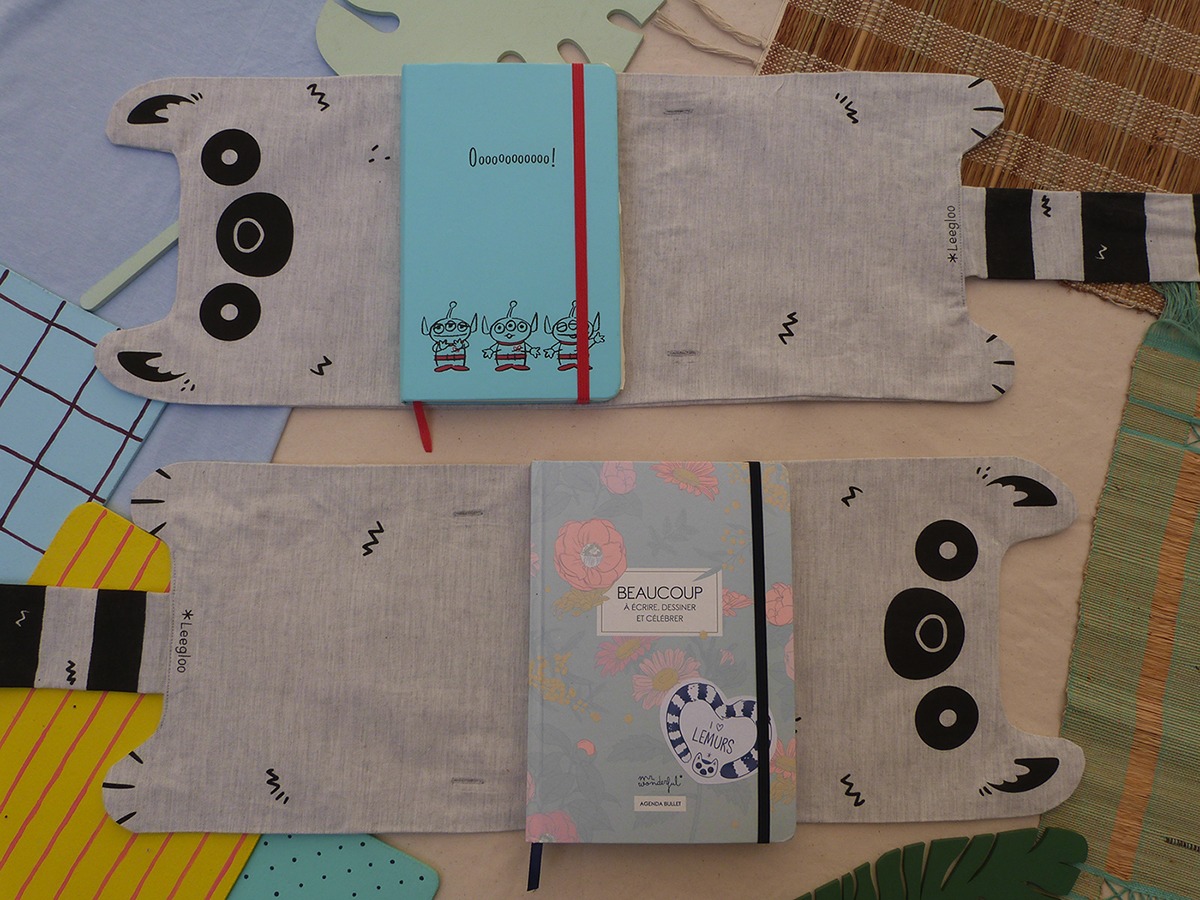
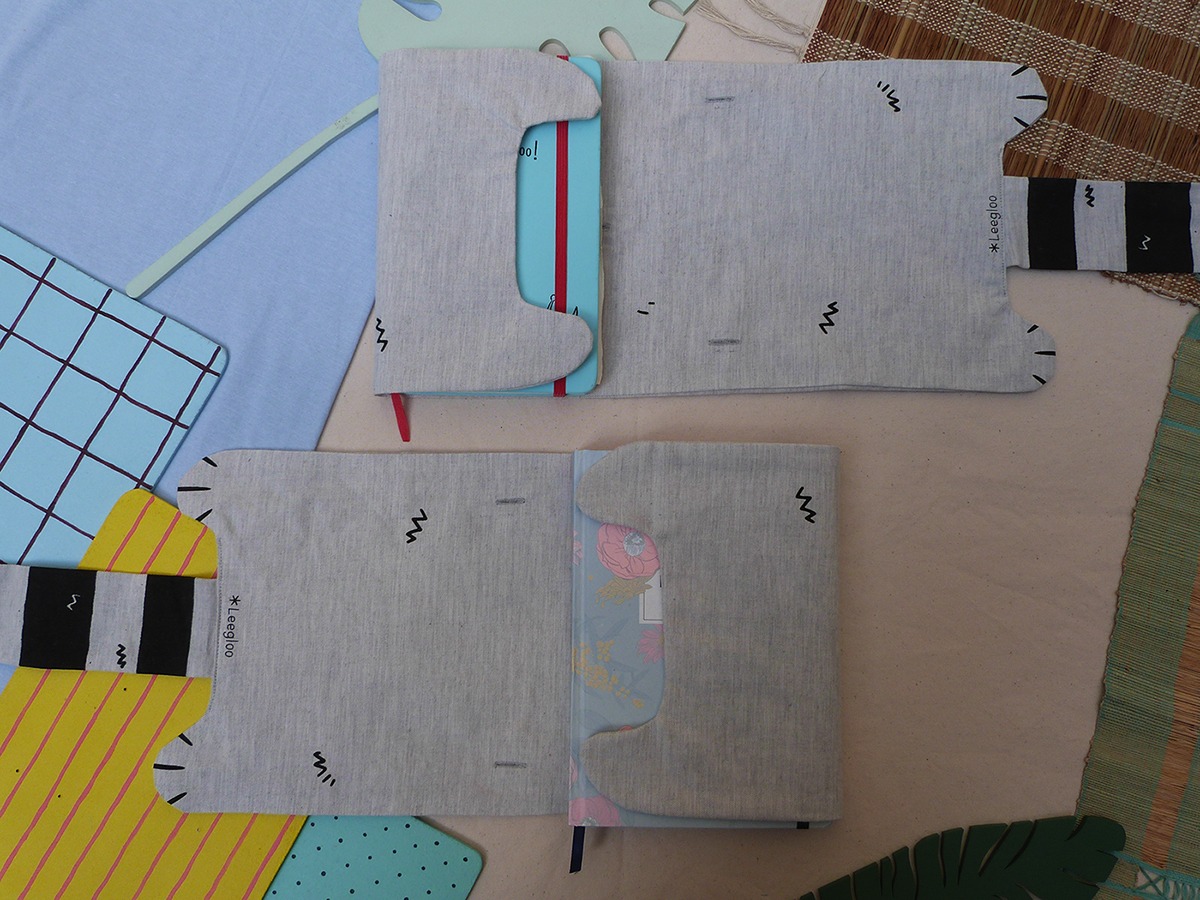

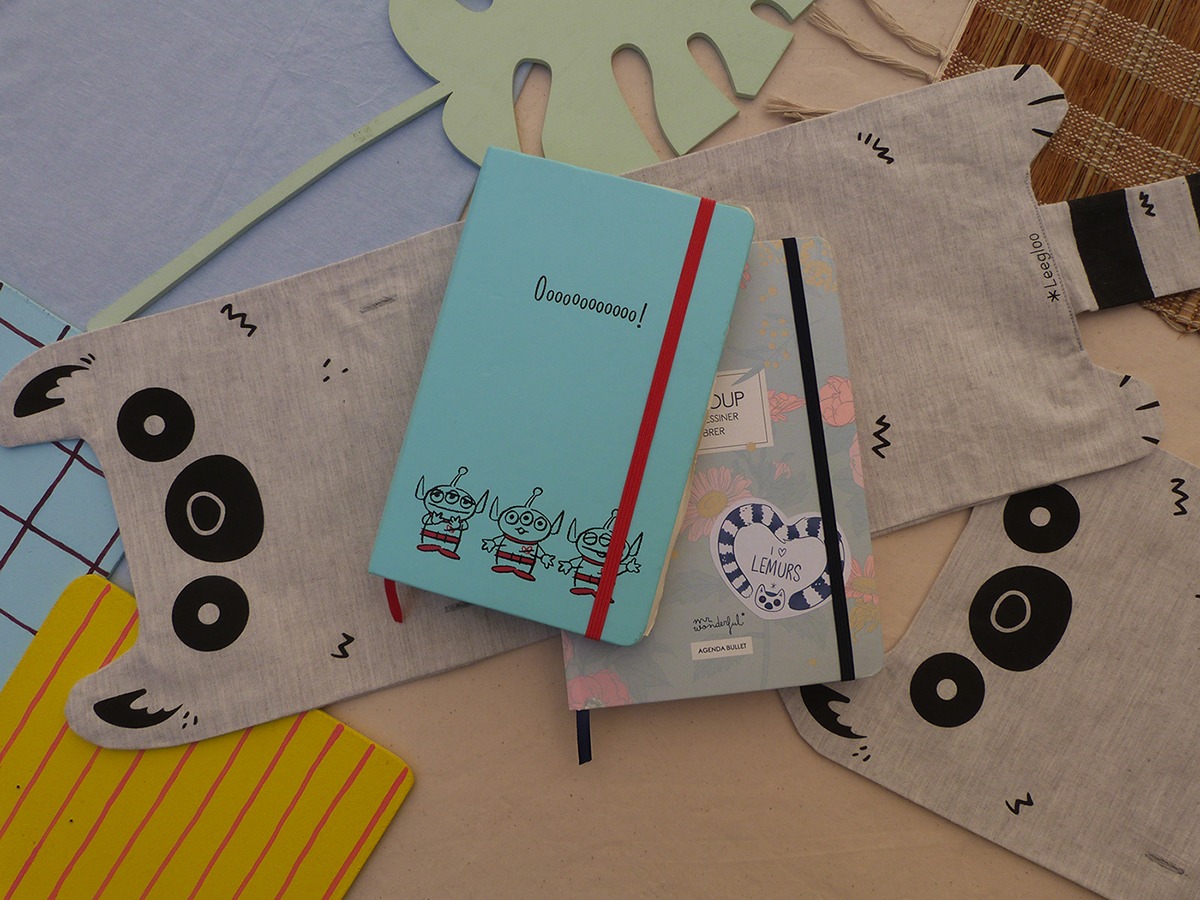
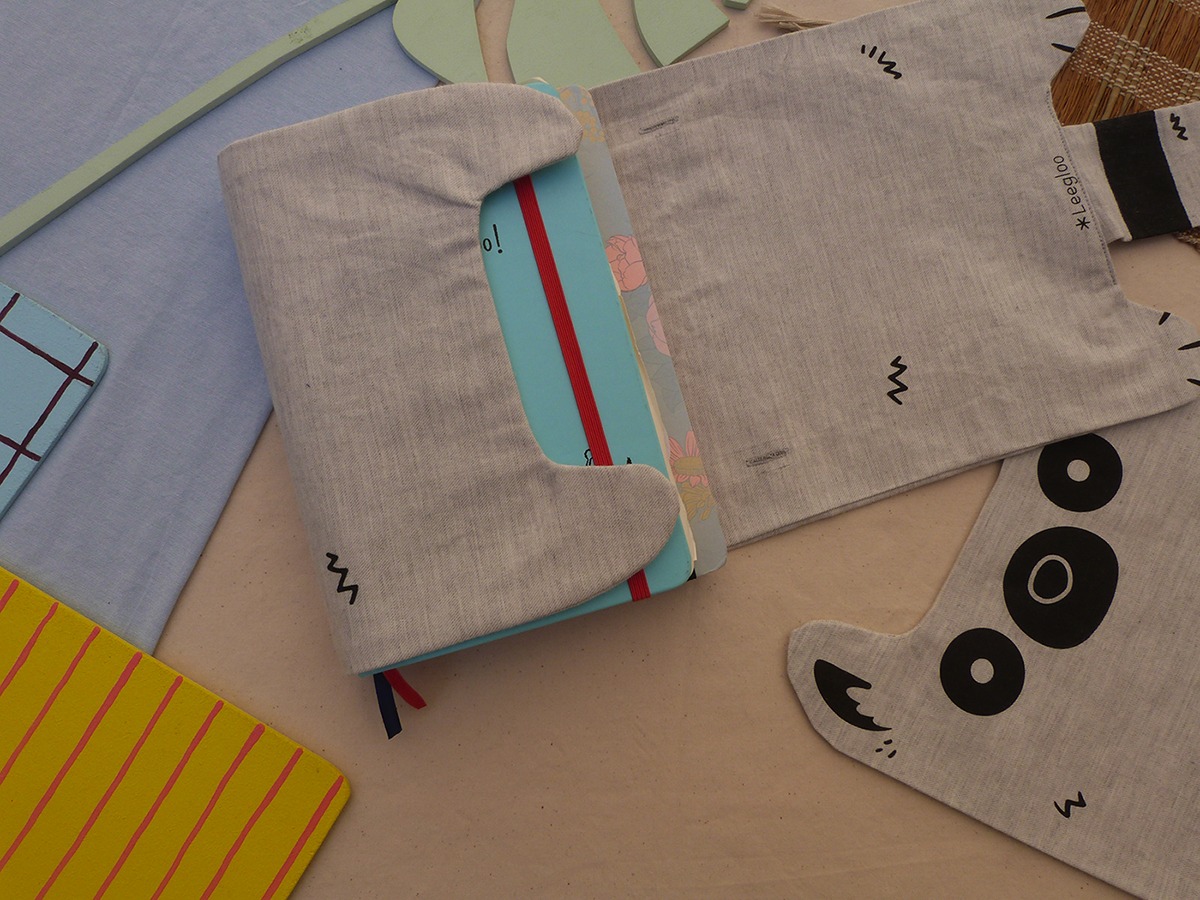
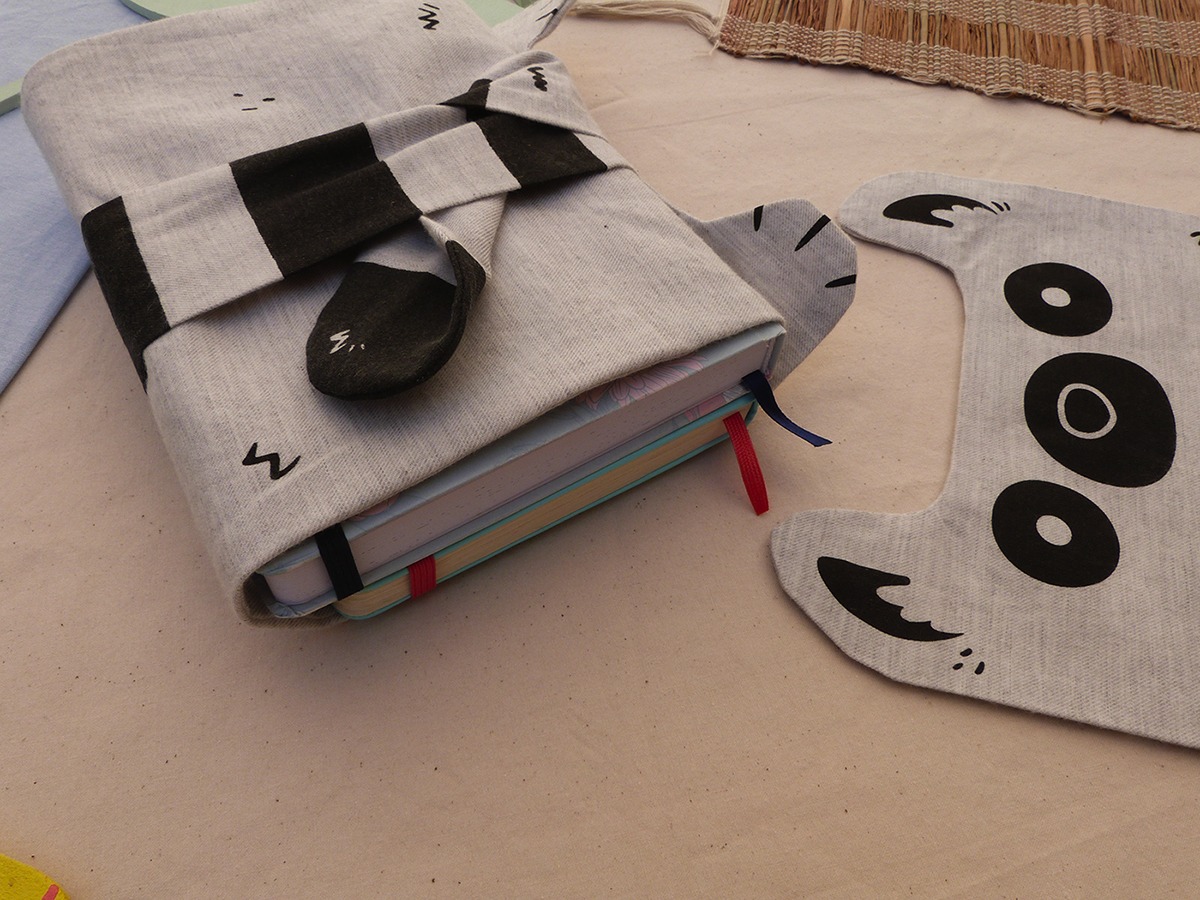
Designed and screen printed by hand
As usual, I did everything from A to Z. The sketches, the tests, the adjustments, the vector drawings, it’s all handmade. Even the screen printing is handmade: I’m the one who handles the squeegee!
The serigraphy is in one color, I had a few hiccups with the ink: the pot was not mixed well. I saw this when printing the tails, as they require more paint than the other parts. I thought I had removed all the stains during the screen printing session, but once the fabric was ironed and washed I discovered more.
Most of the stains are on the tail, it’s not annoying and the gold stains make nice reflections… So I decided to cut back on my fee to offer a lower price than the one I had planned.
The ring-tailed lemur, emblematic lemur of Madagascar
Madagascar is an incredible island, with a lot of species that can’t be found anywhere else: to stay on lemurs, more than 100 species share the country! The red island is also among the first areas affected by global warming, and suffers considerably. The situation, already complicated, has become catastrophic.
Frightened by what is happening now and knowing that lemurs have been threatened for decades, I try to make them known through my drawings. It’s an almost sacred animal for me, it represents half of my family and even if I would like to do more, my financial situation does not allow me to give as much as I would like to the different associations I appreciate. I decided to recalculate my prices for this collection to include some support. I tell you what’s behind my prices here.
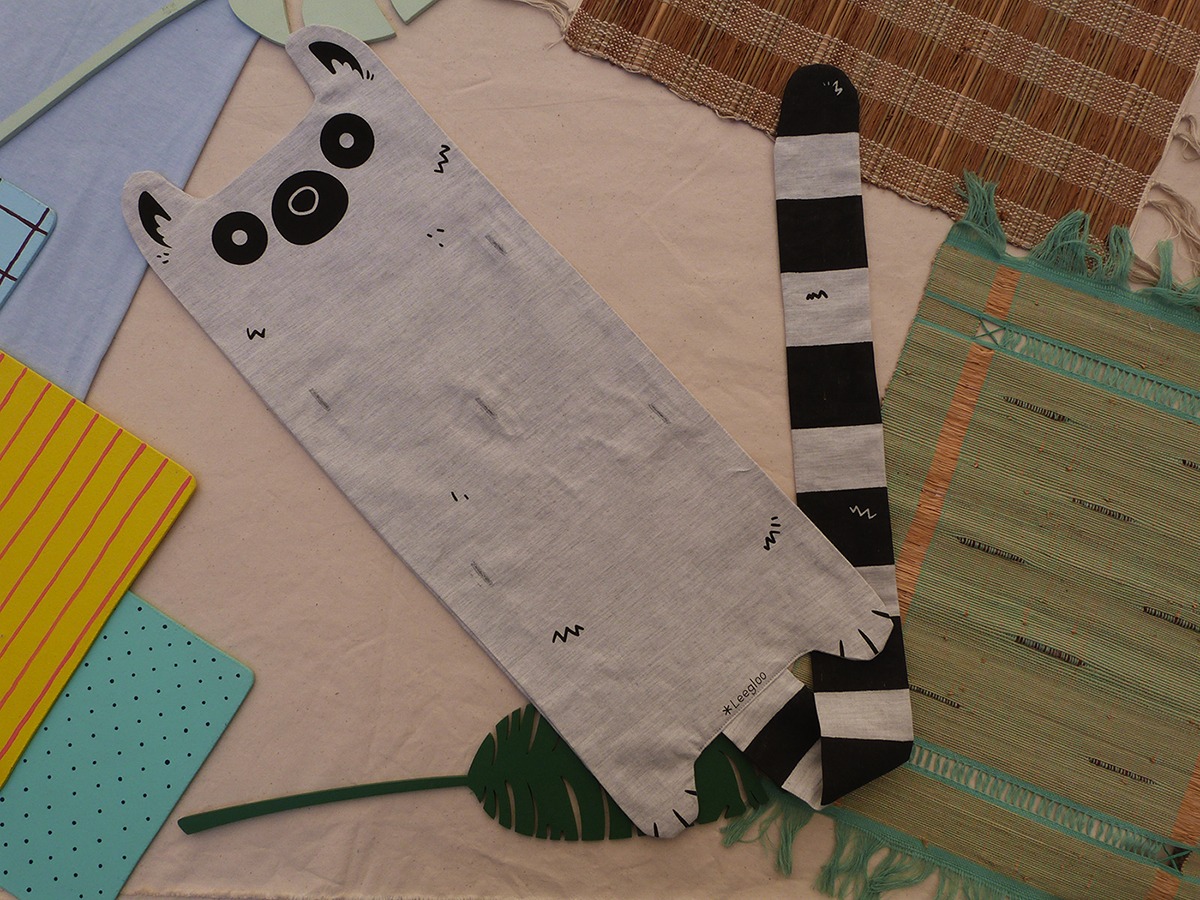
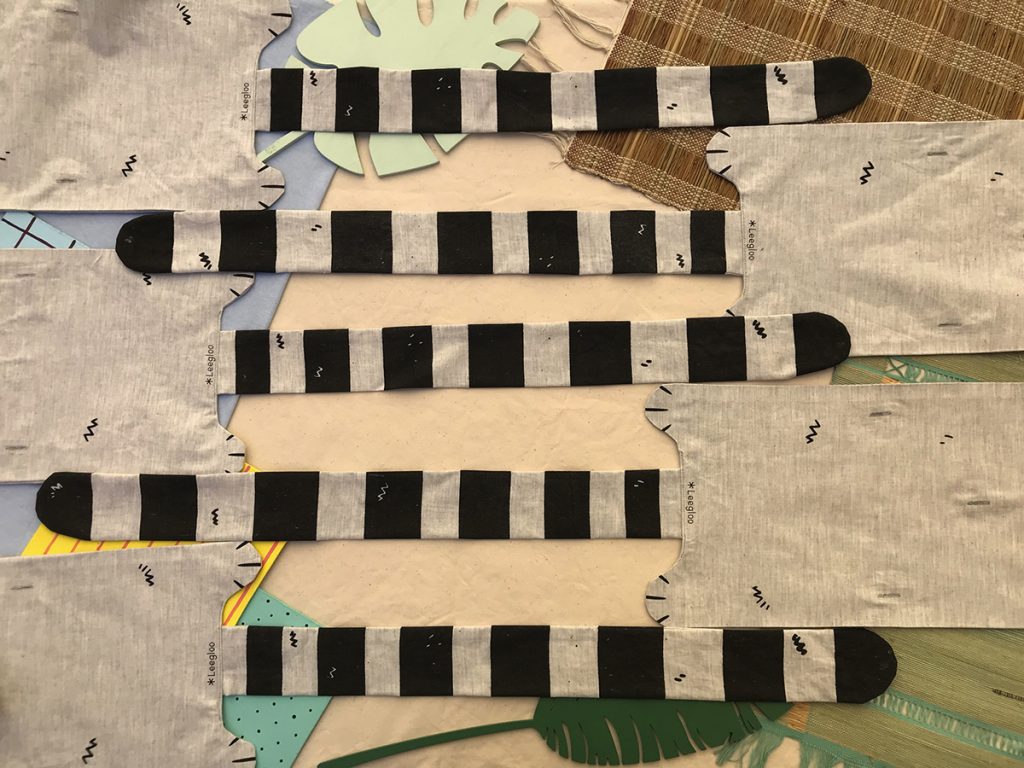

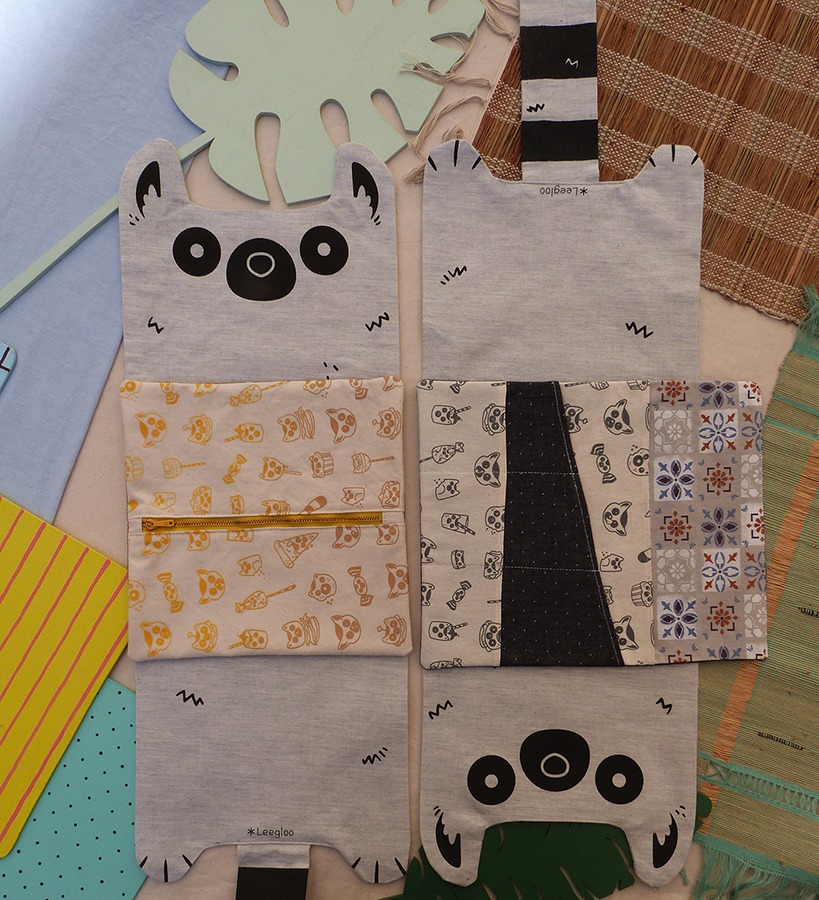
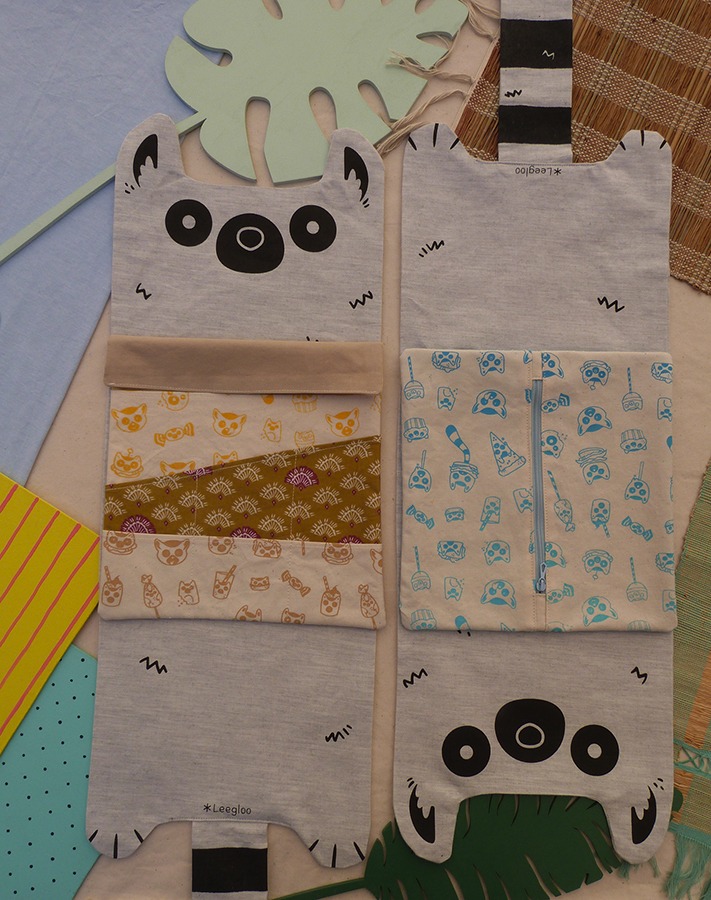
The interchangeable parts, to make your toolkit evolve
I wanted something that could evolve according to my needs and moods. Today I want to take my pencils and markers for a walk, but tomorrow I’m going to take my toiletry bag for a weekend!
For this launch, I created two interchangeable part designs. I took my artist’s rolls for inspiration: one part with compartments, one part with a zipper.
An exclusive Lemur-Food pattern
As for the roll, I made a drawing to pay tribute to the lemur… By turning it into food. YES, because here we are changing animals into food for a good cause! 🍔
By playing with the inks, I was able to make some gradients for the interchangeable parts and the matching screen printed pouches. I really like the result, in fact I couldn’t resist and kept some of the models for myself. 😇
A practical and supportive zipped part
After various tests and feedback from my artist friends, I made the inside of the zippered part out of coated fabric: easy to clean, a sponge and off you go! It’s easy to carry dirty things, like pastels, dirty brushes, or travel accessories to make a toilet bag.
The zipper part is a bit special. In addition to having a part donated to an association (like the other elements), the zipper is second hand. It comes from the solidarity store Bric à brac, whose sales contribute to help the poorest people in the Lyon area (France).
So I went to look through their huge drawer of zippers. Some are salvaged from old clothes, some are still in their packaging. I took the sizes and colors I needed, and of course I washed everything!
It’s a great way to reduce the cost of the material, but it’s also a great way to contribute to important causes.
I always try to give second-hand objects a second life, not only for my creations but in everyday life. For creations, it is not always possible: sometimes I need a certain length of fabric, a special material, buttons of a specific size and color.
In everyday life, this is how I was raised: reuse, repair, recover, give, recycle. For high tech for example, whether it’s my phone, my computer, my printer or my graphic tablet, everything is second hand. At home, we search the junkyard and the bargain sites and believe me… We find real treasures.
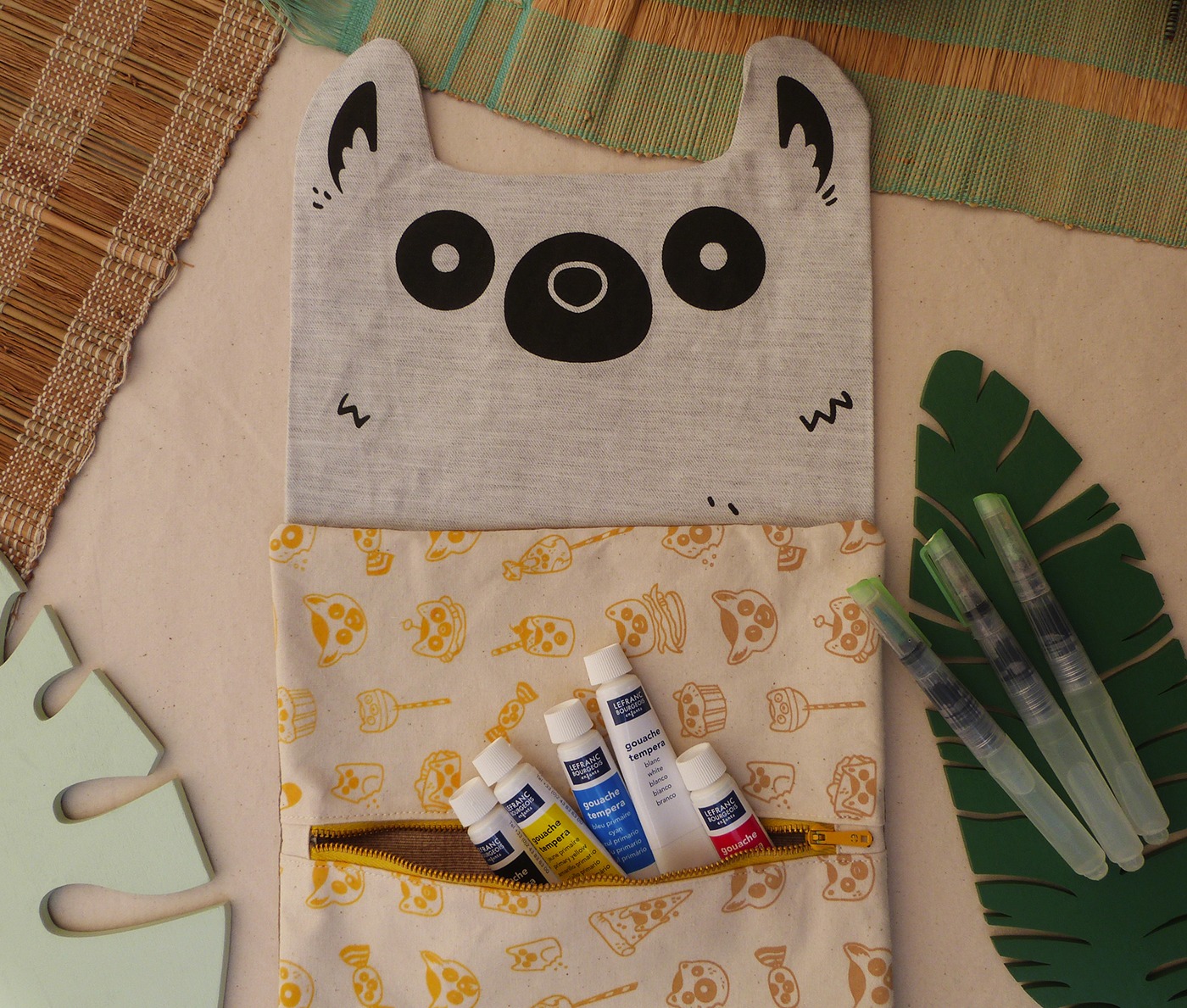
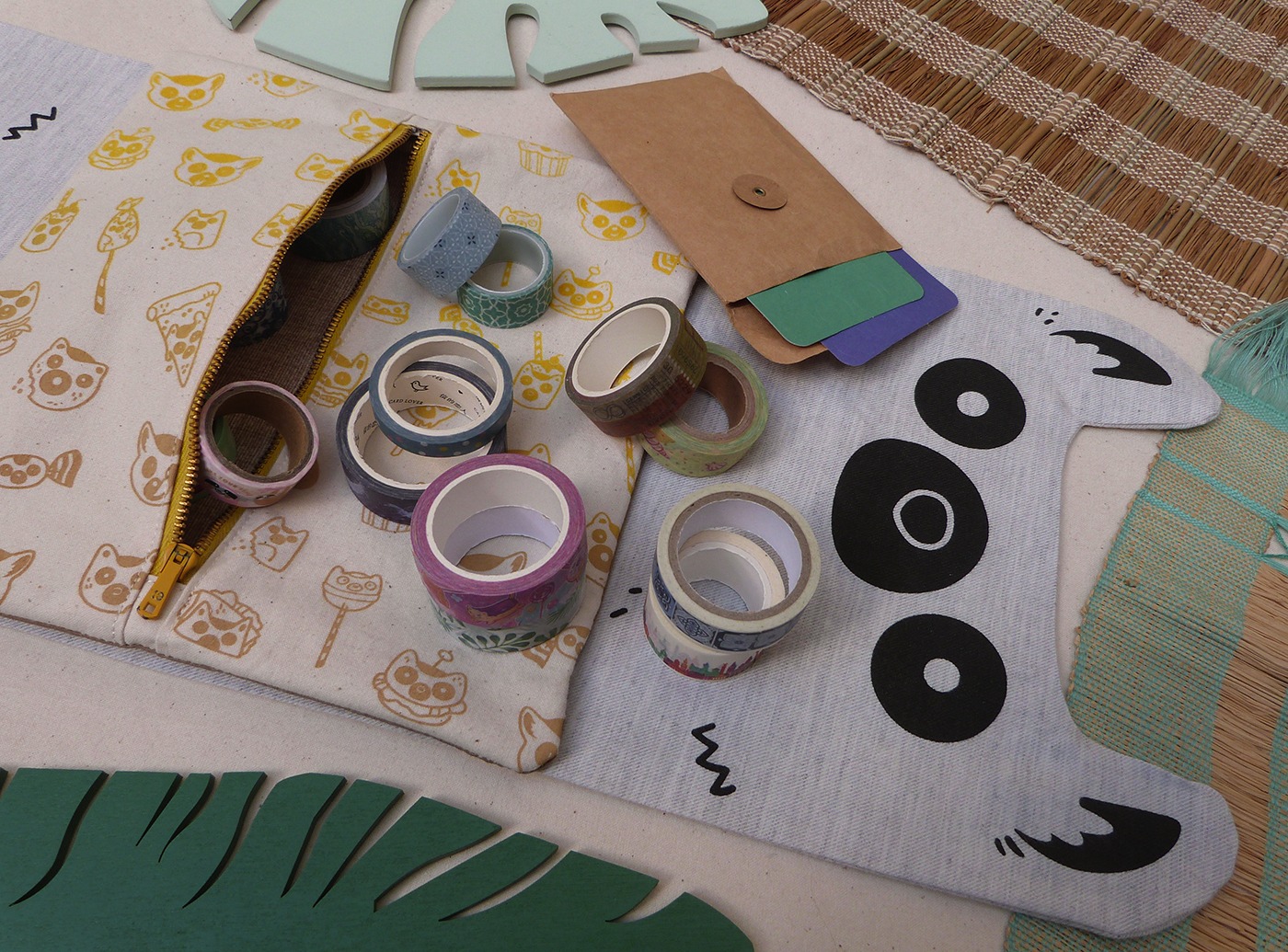
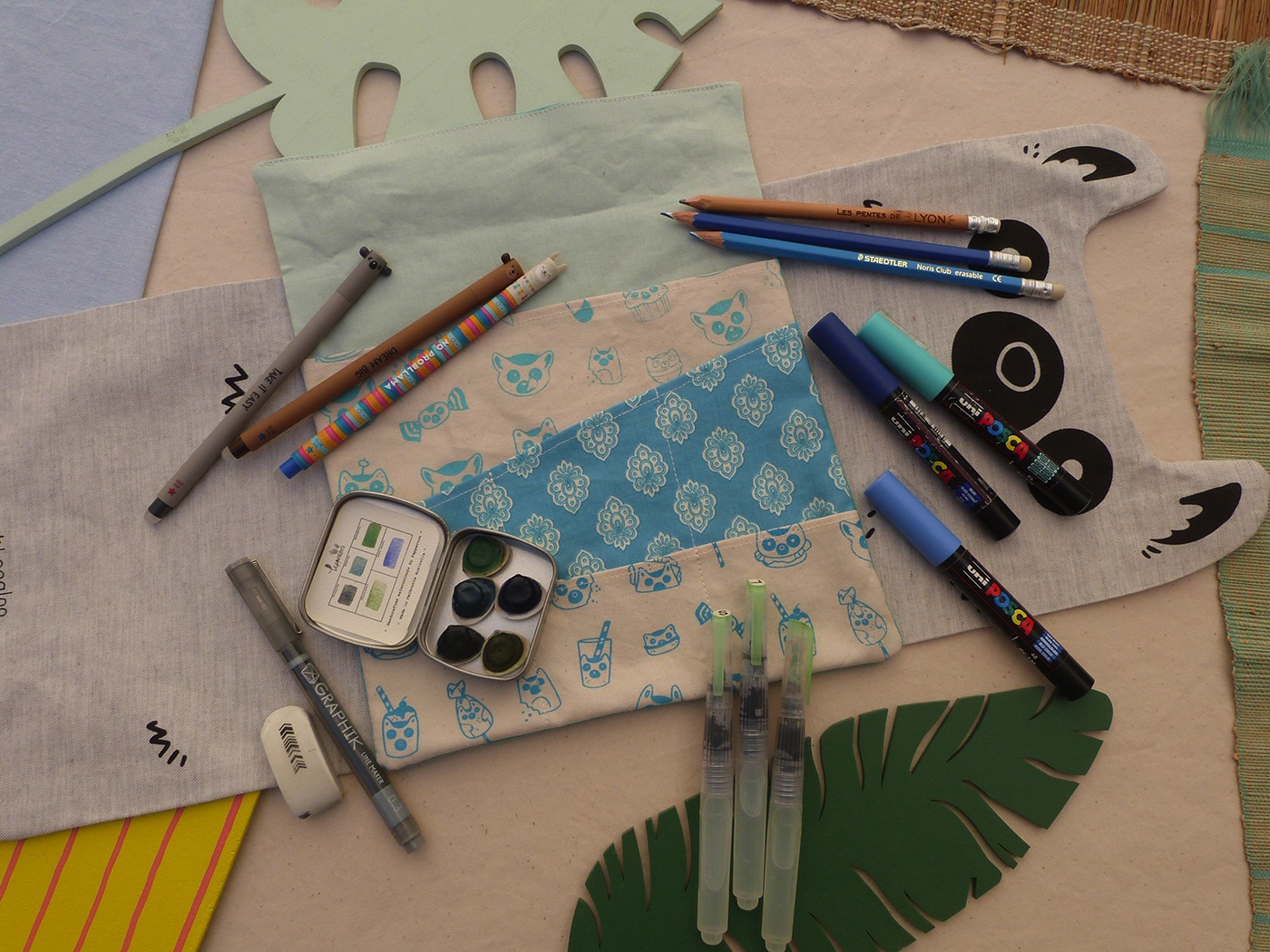
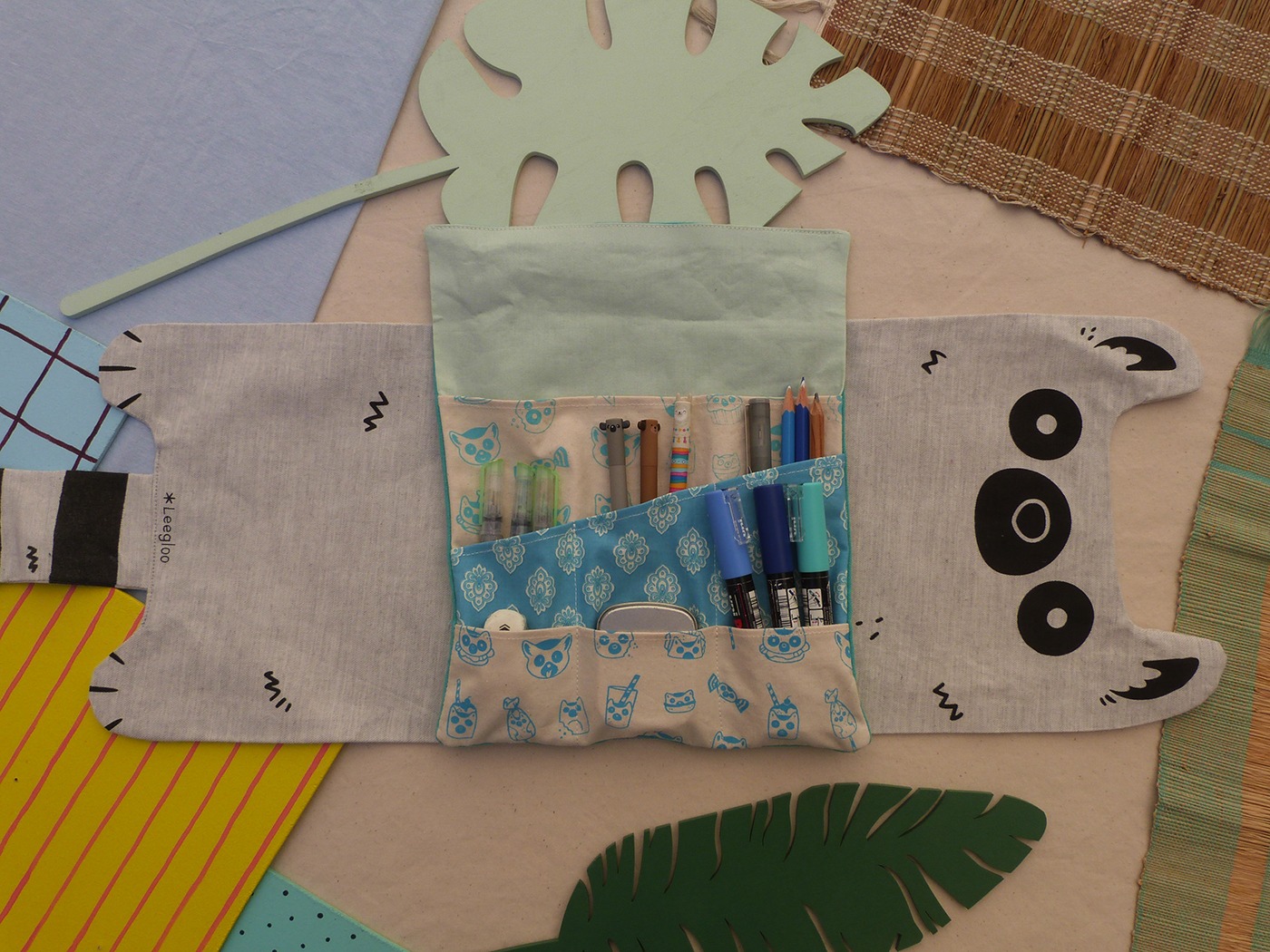
A compartmentalized pouch to store art supplies
The part for pencils, markers: always so practical! The gradient of the silkscreen is less visible on it, but it’s there. I loved matching my fabrics, I could even use some scraps that I was keeping preciously.
Like almost all my creations, each model is unique or almost. I make everything by hand with love in my small workshop, so there are bound to be differences between each product.
The most fun? All the parts go well together. Even though some of them have the exact same fabrics, they match well with the other colors. You can mix and match!
Why do the interchangeable parts have buttons?
If I chose buttons, it is not for nothing. I made many tests for this detachable part, some of them were not very conclusive. The roll had to be able to be used alone while remaining aesthetic, and the parts had to be easy to detach but not too easy either (it would be a shame if it falls down when unfolding the roller).
The system had to be practical and long lasting.
Systems that did not work
Here is an overview of the different possibilities that have been explored:
– snaps: several people asked me why I didn’t use snaps. It was indeed the most logical idea and the fastest to execute… And yet it’s not the one I chose.
The problem with snaps, whether they are plastic or metal, is that you tend to pull hard on them without being careful (I do it too). I make my creations by hand, and no matter how I reinforce them, the fabric is going to get weaker and weaker and is going to tear as I pull on it. And once it’s ripped… Unless you sew a patch on it, you can’t really fix it. That means you »ll have to send the kit back to me to fix it (or even redo it). It won’t hold up over time.
– Velcro: it makes a lot of noise, you pull hard on it which will weaken the fabric over time. If the velcro is ripped and lost, it’s complicated to sew it back by yourself: few people have a piece of velcro lying around, and it’s rather tedious to sew by hand.
– Elastic bands: I thought of a system of elastic to interlace. I abandoned, because over time the elastics will inevitably relax and it would be much too complicated to replace. You would have to unstitch the kit to repair it.
– Straps: a bit like a belt, the straps hold the interchangeable part to the roll. I quickly forgot: tedious to make (you have to think about it, it affects the price!), complicated to repair.
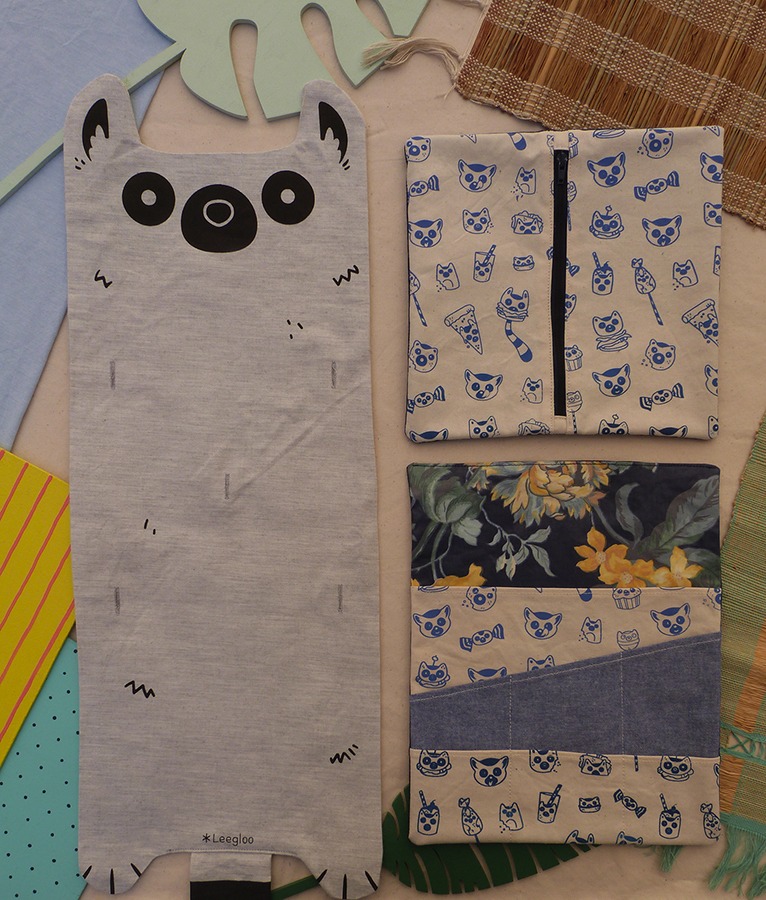
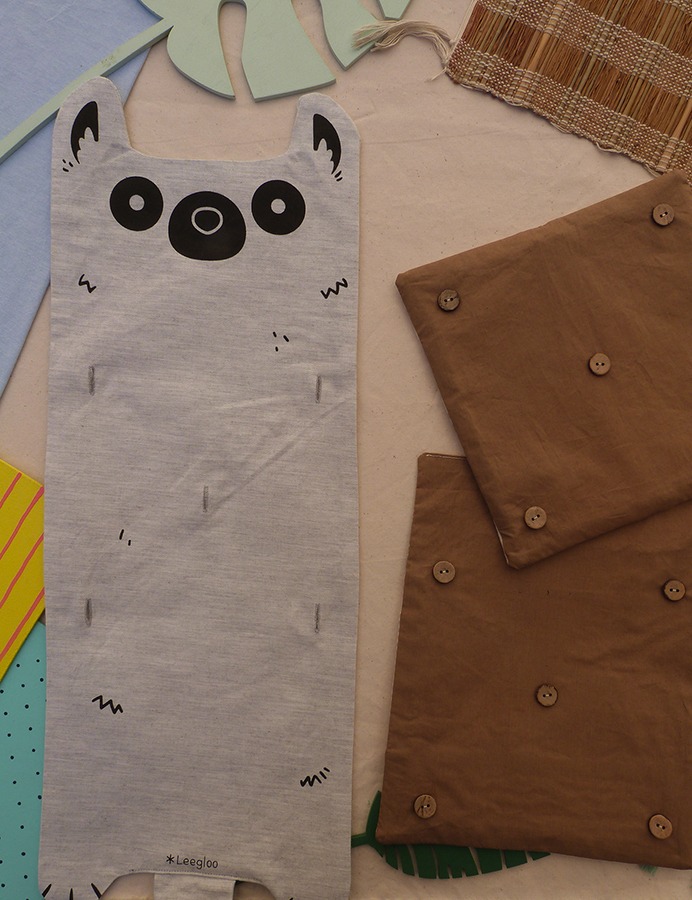
The buttons: easy to repair, they last over time.
So we come to the button system. Simple buttons.
To button the part, we are forced to go slowly… We are instinctively slower with a button than with a snap.
If a button comes off, it’s so easy to replace: we all have buttons lying around, we get them when we buy shirts or pants for example, sometimes with a small sewing kit.
A needle, a piece of thread, a button: it is found and sewn easily. If a button is lost, we replace it under a minute.
No need to send the pouch back to me, no need for complicated steps. I can even provide the button if you don’t like having mismatched ones.
This is the system that these kits needed: simple, you go slowly so the fabric will last longer, easy and quick to repair. Plus, you can turn the part any way you want! 🥰
Iron-on: to keep everything in place.
The roll and the pencil part have a thin layer of double-sided adhesive iron-on on the inside. This is what allows the kit to hold together when you lift it: the two layers of fabric are glued together and only split if you force it.
It’s an essential tool: without it, I would have had to make several seams in the middle of each part to force the layers of fabric to stay together. Not only would it have been unattractive, it would have added a lot of work. I could also have made a kit without a lining: with just one fabric. It wouldn’t have been as durable or as pretty.
After washing, if it doesn’t stick enough, just iron the roll or the part to reactivate the iron-on.
By the way, all the parts can be ironed without any problem, and can be washed up to 30°. Ideally, you should put them in a delicate laundry net (or a closed pillowcase) and let them air dry.
A portion of the price donated to make a difference
For each item (roll or interchangeable pouch), a part of the price is donated to Impact Madagascar. The association works for the protection of lemurs and their environment while acting for the local population. I chose Impact Madagascar because I found their global approach very meaningful. Even if lemurs are the heart of my collection, it was not possible to forget the rest. You can find out more on their website.
It is an admirer of lemurs who recommended this association to me. It is also relayed by Lemur Conservation Network which I had the pleasure to work with. If you want to help lemurs but don’t know where to start, go on their website: it’s a gold mine. On top of that, they are very respectful of the artists who work for them!
I pay taxes on every euro I receive, even if I donate a part of it to an association. I have calculated as accurately as possible to be able to contribute to a cause that is close to my heart. You can read more in my article about prices.
